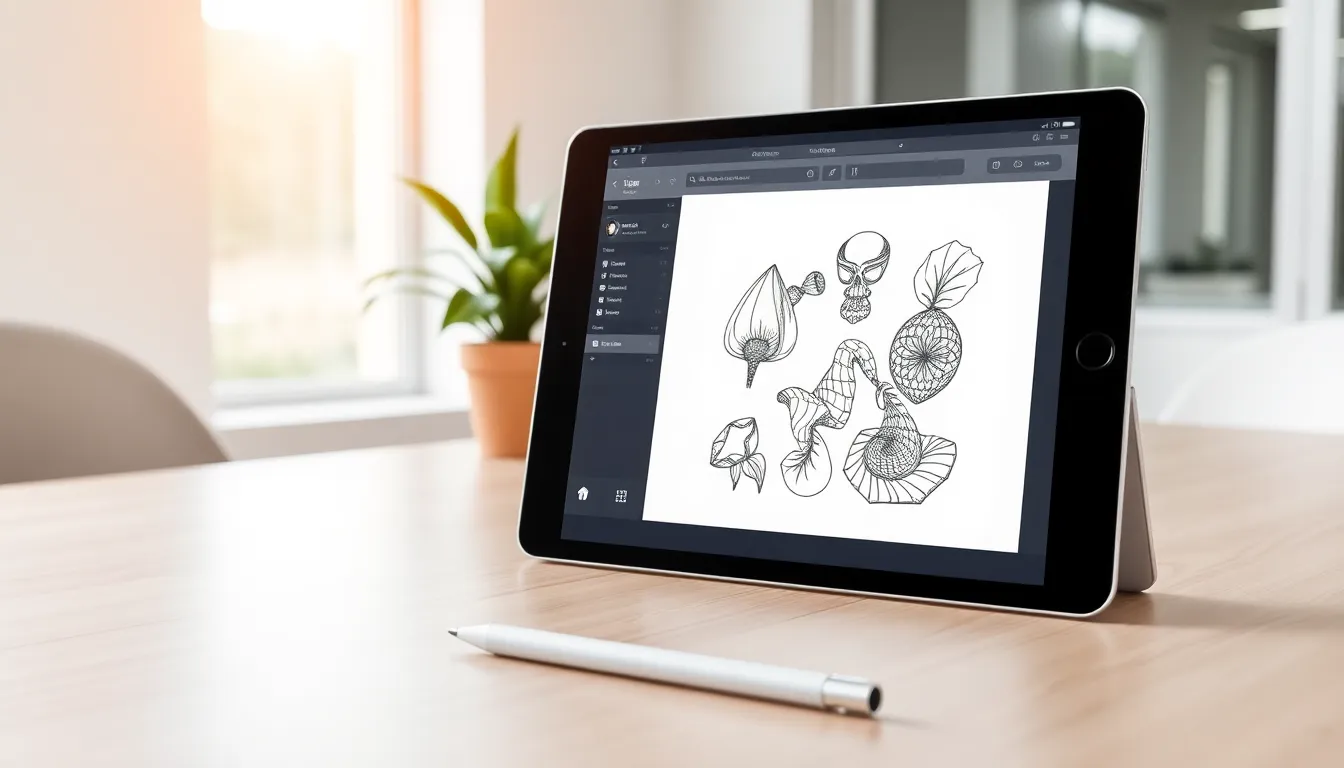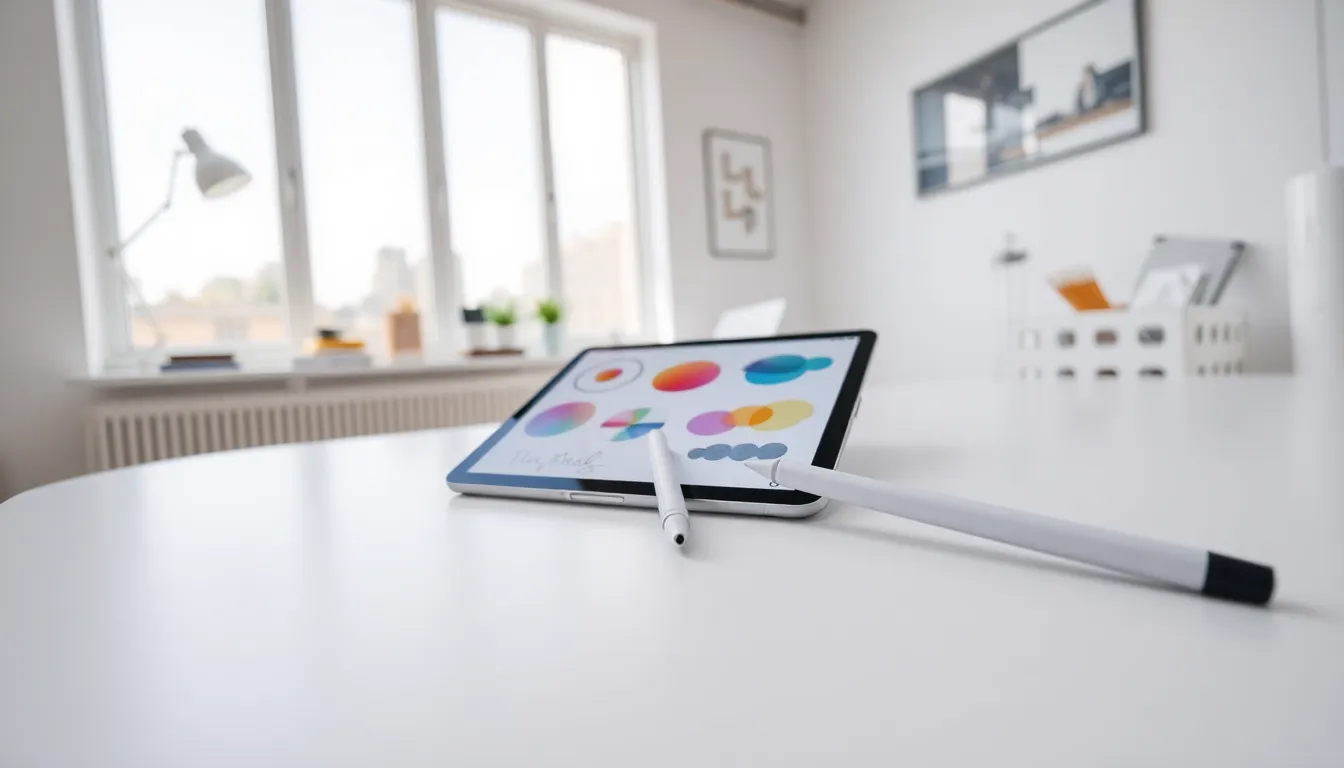In a world where typing is king, the humble pen seems to be gathering dust. But what if there’s a way to combine the best of both worlds? Enter the tablet with handwriting recognition—your new best friend for jotting down notes, sketching masterpieces, or even doodling during those endless Zoom meetings. Imagine writing like you’re back in school while your tablet magically translates your chicken scratch into neat, legible text.
Table of Contents
ToggleOverview of Tablets with Handwriting Recognition
Tablets equipped with handwriting recognition merge the convenience of digital technology with the tactile experience of writing. These devices convert handwritten input into digital text, catering to various user needs.
What is Handwriting Recognition?
Handwriting recognition refers to the technology that translates handwritten characters into machine-readable text. This process may involve various methods, including optical character recognition and machine learning algorithms. Devices utilize stylus pens or touch screens for writing, ensuring accuracy and efficiency. Advanced models employ AI to improve recognition rates, adapting to individual writing styles. The technology continues to evolve, allowing more seamless integration into tablet functions.
Importance of Handwriting Recognition in Tablets
Handwriting recognition enhances productivity by enabling faster note-taking and documentation. Students benefit from handwritten notes that convert to text for easy organization and sharing. Professionals often find it invaluable during meetings, capturing thoughts quickly while maintaining engagement. Accessibility increases as users with different learning styles can harness their preferred methods of writing. Furthermore, this technology supports creative expression through sketching and drawing, merging functionality with artistic capabilities.
Features to Consider

Selecting a tablet with handwriting recognition involves evaluating several key features that impact functionality and user experience.
Screen Size and Resolution
Screen size impacts comfort during writing and reading. Larger displays, typically ranging from 10 to 12 inches, provide ample space for note-taking or sketching. Resolution plays a crucial role in clarity; higher resolutions, such as Full HD or better, ensure sharp text and vivid images. Users can enjoy precise handwriting recognition on high-resolution screens since finer details are more accurately captured. When comfort and clarity align, users experience a more natural writing feel.
Stylus Compatibility
Stylus compatibility directly influences the writing experience on tablets. Devices may support different stylus types, from pressure-sensitive options to those offering tilt functionality. Pressure-sensitive styluses allow users to adjust line thickness based on how hard they write, enhancing creativity. Tablets may also feature palm rejection technology, enabling users to rest their hands while writing comfortably. Prioritizing a tablet compatible with advanced styluses equips users to fully utilize handwriting recognition features.
Battery Life and Performance
Battery life affects prolonged use significantly. Tablets that offer at least 8 to 10 hours of battery life support extended writing sessions without interruption. Performance matters as well; devices should have sufficient processing power to handle handwriting recognition smoothly. A robust processor ensures quick conversion of handwritten text into digital format, minimizing lag and maximizing productivity. By choosing a tablet with strong battery life and performance capabilities, users access reliable handwriting recognition throughout their daily activities.
Top Tablets with Handwriting Recognition
Several tablets excel in handwriting recognition capabilities, making them suitable for various users. The following tablets stand out for their features and advantages.
Tablet 1: Features and Pros
Apple iPad Pro offers a superior writing experience thanks to its Liquid Retina display. This model supports the Apple Pencil, featuring low latency and pressure sensitivity. Users appreciate the extensive battery life, lasting up to 10 hours on a single charge. The integration with note-taking apps enhances usability, allowing seamless handwriting conversion. Advanced machine learning algorithms further improve recognition accuracy, adapting to any writing style over time. Overall, this device suits both students and professionals seeking efficiency.
Tablet 2: Features and Pros
Samsung Galaxy Tab S8 presents a stunning AMOLED display for a vibrant writing experience. The S Pen, included with the device, boasts a comfortable grip and high responsiveness. Battery life reaches up to 14 hours, allowing extended use without frequent recharging. It supports multiple handwriting recognition apps, offering flexibility for creative tasks. Additionally, the device includes robust multitasking features, making it easier to switch between applications. This tablet caters to users who value a rich visual experience alongside practical handwriting functionality.
Tablet 3: Features and Pros
Microsoft Surface Pro 8 features a large PixelSense touchscreen that enhances handwriting recognition. Its Surface Slim Pen provides a natural writing feel with excellent precision. The tablet supports Windows operating system, enabling compatibility with various productivity software. Battery life varies up to 16 hours, accommodating long days of work or study. A detachable keyboard adds versatility for those who prefer typing. This model is ideal for professionals who require both stylus and keyboard capabilities, blending both skills seamlessly.
User Experience and Usability
Tablets with handwriting recognition enhance the writing experience, offering users a seamless transition from ink to digital text. Comfortable writing surfaces and responsive stylus technology contribute to natural writing movements. Many devices incorporate advanced recognition algorithms, achieving high accuracy even with varied handwriting styles. Regular updates improve the recognition capabilities, allowing the technology to adapt to individual preferences. Pressure sensitivity in styluses further enables users to create nuanced lines, resulting in a satisfying experience for both note-taking and artistic expression.
Writing Experience and Accuracy
Users enjoy an intuitive writing experience on tablets designed for handwriting recognition. Tablets often feature screens between 10 and 12 inches, providing ample space for comfortable writing. High-resolution displays enhance clarity, ensuring handwritten notes remain legible. Accuracy in handwriting conversion is critical, and many devices achieve recognition rates above 90%. The integration of machine learning allows tablets to adapt to individual handwriting quirks over time. Drawing lines can feel smooth and natural, with minimal lag between strokes and recognition.
Applications and Software Support
A variety of applications support handwriting recognition on tablets, catering to diverse user needs. Popular note-taking apps include Notability, GoodNotes, and Microsoft OneNote, each offering unique features for organization and editing. Many applications allow users to easily convert handwriting to text, enhancing productivity during lectures and meetings. Integrations with cloud services ensure accessibility across devices, facilitating seamless transitions between platforms. Frequent updates often introduce new functionalities, ensuring users can make the most of their tablets for both casual and professional tasks.
Tablets with handwriting recognition are transforming the way people approach note-taking and creative expression. By merging the familiarity of pen and paper with cutting-edge technology, these devices cater to diverse learning styles and enhance productivity across various fields.
Choosing the right tablet involves considering essential features such as screen size, stylus compatibility, and battery life, ensuring an optimal writing experience. With leading options like the Apple iPad Pro, Samsung Galaxy Tab S8, and Microsoft Surface Pro 8, users can find a device that meets their specific needs.
As technology continues to evolve, tablets equipped with handwriting recognition will likely play an increasingly vital role in how individuals capture ideas and communicate effectively. Embracing this innovation can lead to more efficient workflows and a richer creative experience.






